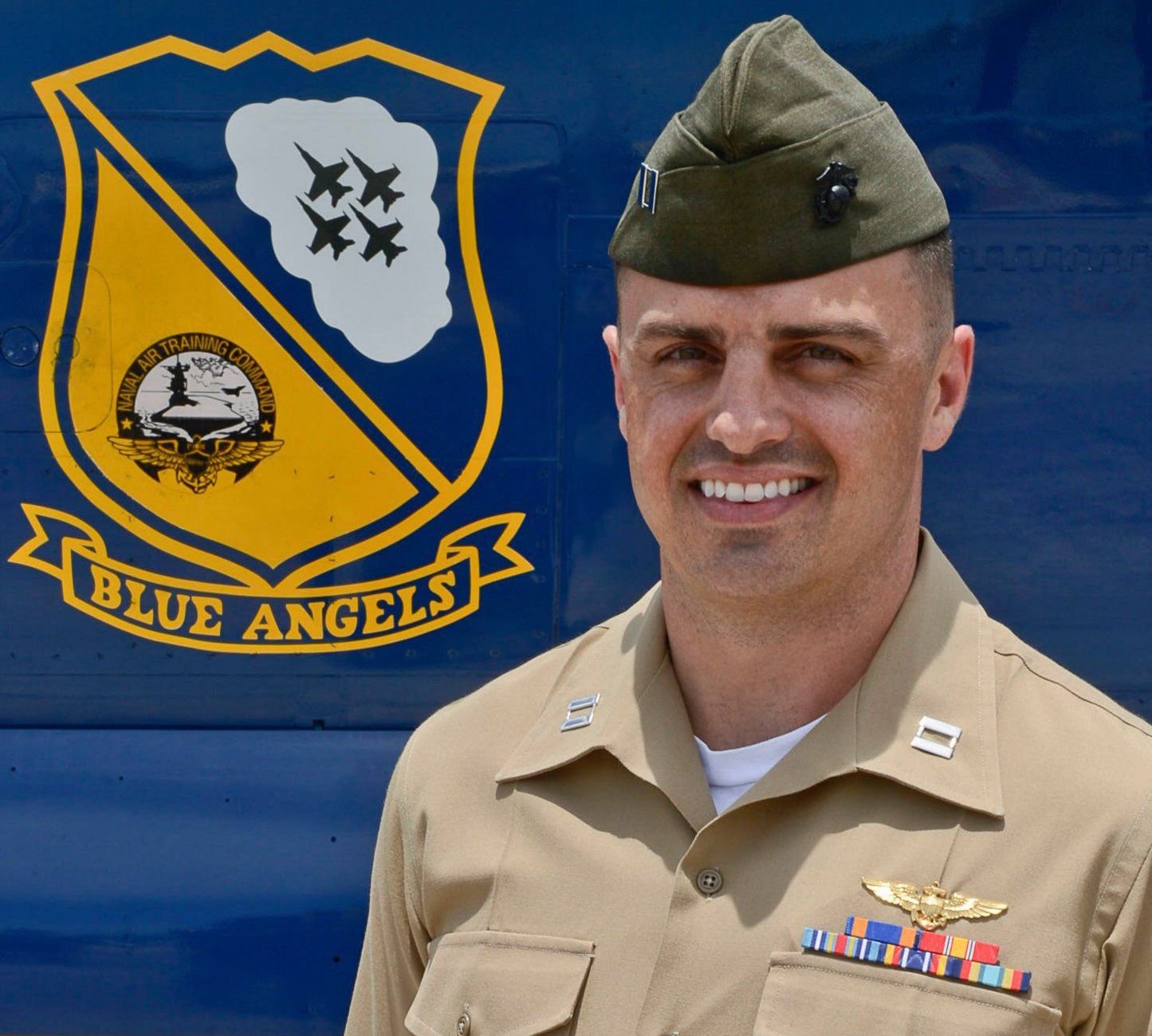
The Navy determined that pilot error caused the fatal Blue Angels crash on June 2, with Marine Corps pilot Capt. Jeffery Kuss entering the first maneuver in a training run too fast and losing control of the aircraft.
The Navy investigation, signed by Chief of Naval Air Training Rear Adm. Dell Bull on Aug. 25 and by Commander of Naval Air Forces Vice Adm. Mike Shoemaker on Sept. 14, notes that the investigation “did not uncover evidence the mishap was caused by mechanical, maintenance or other aircraft-related issues.”
Though Kuss, the Blue Angel 6 pilot with solo maneuvers in the show, was “fully certified, qualified, and authorized for flight status,” the pilot entered into his first maneuver, called the “Split S,” too fast and too low. He did not attempt a dive recovery effort after making these initial mistakes, the investigation found, and “the aircraft was simply too low and too fast to avoid impacting the ground,” states the report, released to USNI News today.
A more detailed section of the report adds that Kuss, who was designated a naval aviator in November 2009 and had accumulated more than 1,680 hours of military flight hours with no mishaps or violations, was flying at 184 knots while entering the maneuver instead of the optimal 125 to 135 knots. Rather than performing the planned 180-degree roll, Kuss performed a 540-degree roll, which is not part of the Federal Aviation Administration’s approved Blue Angel Maneuvers Package and doesn’t comply with Naval Air Systems Command’s Interim Flight Clearance for Blue Angels Aircraft. During the Split S maneuver, Kuss made a call on the radio indicating that he had reached a position of flying vertical and pointing down and had lowered the throttles from their “MAX” position, but the report states the throttles were still at MAX when the plane crashed. He did not attempt a dive recovery maneuver as he neared the ground.
Kuss did attempt to eject from the aircraft but did so too late to survive the crash.
The two versions of the report signed out show differing opinions on the role weather played, with Bull’s version calling weather “not a causal factor” but Shoemaker’s version suggesting that clouds may have led the pilot to begin the Split S maneuver at a lower altitude. Shoemaker’s memo also highlights the role of pilot fatigue, stating that “Capt. Kuss showed signs of fatigue on Thursday, 2 June 2016 as evidenced by out-of-character habit pattern omissions, such as not signing the [aircraft acceptance] sheet, not turning on [his transponder], and not deselecting afterburner after verbalizing it on the radio.”
Though the aircraft as a whole was deemed to be in working condition, the report notes a potential problem with the altimeters – a discrepancy between the radar and barometric altimeters – which could have shown an incorrect or delayed reading during Kuss’s flight. Still, the report finds, “based on his training and experience, he should have recognized his extremely rapid descent rate and that the nose angle does not always equate to aircraft flight path.”
The investigation noted that a similar mishap occurred in 2004, when the incoming Blue Angel 6 pilot was being trained to perform the Split S maneuver. The pilot ejected from the plane and survived, but the plane was a total loss.
The report makes clear that readiness – both the material condition of the plane and the training of the pilot– was not a factor in the crash. Marine Corps aviation ordered an operational pause in early August after two other Hornets crashed within five days of each other in July. The service has struggled maintain readiness in its non-deployed squadrons, but Deputy Commandant for Aviation Lt. Gen. Jon Davis has repeatedly said that pilots were receiving enough flight hours each month to operate safely, even if flight hour averages are below desired levels.
The investigation recommends several actions related to reviewing and archiving Blue Angels standard operating procedures. It also calls for changes in the Split S maneuver itself to make the evolution safer, and it recommends new tools such as a computer program that could calculate a needed turn radius and other metrics for the pilots, rather than making pilots calculate the numbers by hand based on the altitude and other features of each individual show field.
Shoemaker wrote in his memo signing off on the investigation that Kuss was “fully qualified to fly the F/A-18C aircraft and was universally recognized as one of the most meticulous and professional Blue Angel pilots by his teammates.”





